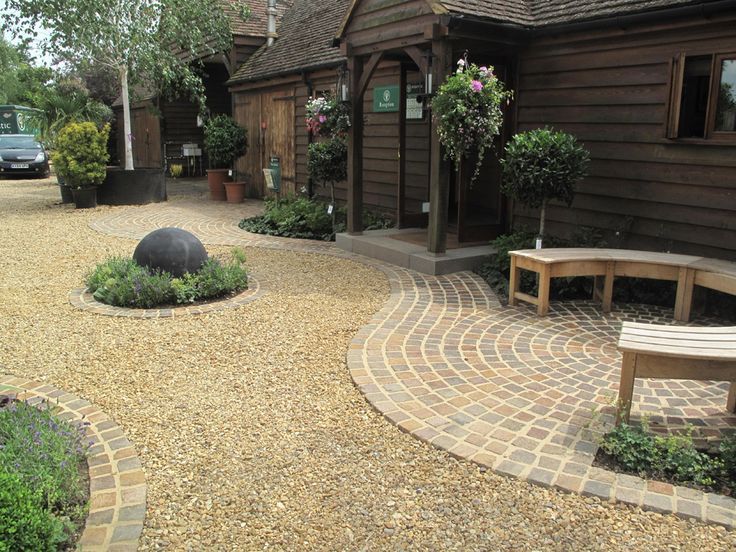Creating a beautiful garden path doesn’t have to break the bank. Whether you’re looking to enhance your garden’s aesthetics or simply need a practical way to navigate your outdoor space, there are plenty of affordable options to choose from. In this blog, we’ll explore some of the most cost-effective materials for garden paths service in Durham and share tips on how to create a stunning yet budget-friendly pathway.
Why Choose a Garden Path?
Garden paths serve more than just a decorative function. They provide a clear route through your garden, protect your plants and lawn from wear and tear, and can even add value to your property. A well-placed path can guide visitors through your landscape, enhance the flow of your garden, and offer a practical solution to avoid muddy areas.
Whether you’re designing a winding path through your flower beds or a straight route from your front door to your garden, choosing the right material is crucial to keeping costs down while maintaining style and durability.
What is the Cheapest Option for a Garden Path?
Several materials can provide a cheap yet effective solution for creating a garden path. Let’s break down some of the most budget-friendly options:
1. Gravel
Gravel is one of the most affordable and popular options for garden paths. It’s easy to install, requires minimal maintenance, and offers excellent drainage. Gravel paths work well in almost any garden setting, from informal rustic gardens to more modern landscapes. The cost of gravel varies, but it is typically one of the least expensive materials available.
Pros:
- Budget-friendly
- Easy to install
- Good drainage
- Wide range of colours and sizes available
Cons:
- Gravel can shift over time, requiring occasional replenishing
- May need regular weeding to prevent unwanted growth between the stones
2. Mulch
Mulch is another low-cost material for garden paths. It’s made from organic materials like wood chips, bark, or straw, and it creates a natural, rustic look for your garden. Mulch paths are incredibly easy to lay down, and they help improve soil quality as they decompose.
Pros:
- Very cheap and readily available
- Easy to lay and maintain
- Adds nutrients to your soil as it decomposes
Cons:
- Needs to be replenished regularly as it breaks down
- Can be messy in wet conditions
- Not as durable as other materials like gravel or stone
3. Concrete Pavers
Concrete pavers can be an affordable option when bought in bulk or on sale. They’re easy to install and can be arranged in a variety of patterns to suit your garden’s design. While the initial cost may be slightly higher than gravel or mulch, concrete pavers are durable, long-lasting, and require less maintenance in the long run.
Pros:
- Durable and long-lasting
- Easy to install and maintain
- Versatile in design and style
Cons:
- Initial cost can be higher than other options
- Pavers may shift over time if not installed correctly
4. Recycled Materials
Using recycled materials is an eco-friendly and budget-conscious option for your garden path. You can repurpose old bricks, broken tiles, or even leftover wood to create a unique, low-cost path. Not only does this save money, but it also helps reduce waste and gives your garden a personal touch.
Pros:
- Very cheap or even free (depending on the materials you already have)
- Eco-friendly and sustainable
- Customizable to suit your garden’s style
Cons:
- Materials may need to be cleaned or sorted before use
- May take more time to gather the materials
5. Stepping Stones
Stepping stones are another inexpensive and simple option for a garden path. You can buy pre-made stepping stones, or if you’re feeling creative, you can make your own with concrete or paving slabs. This type of path is perfect for informal gardens or spaces where you don’t need a fully paved path.
Pros:
- Inexpensive and easy to install
- Provides a natural look to your garden
- Minimal maintenance
Cons:
- May not be suitable for areas with heavy foot traffic
- Gaps between stones can fill with weeds over time
How to Save Even More Money on Your Garden Path
While choosing affordable materials is the first step, there are a few ways to save even more money on your garden path installation:
- Do It Yourself: Installing your own garden path is the best way to save on labour costs. With the right materials and tools, you can easily lay down a path on your own without needing to hire a professional.
- Buy in Bulk: Purchasing materials in bulk or from local suppliers can save you money. Many retailers offer discounts for larger quantities, and you may be able to find cheaper options from wholesalers.
- Repurpose Materials: Look for discarded or leftover materials from local construction projects, friends, or family. With a bit of creativity, you can transform what would be waste into a beautiful garden path.
- Use a Simple Design: Keeping your path design simple and straightforward will save you money on materials and installation time. Avoid complex patterns or excessive curves, and focus on creating a functional and stylish path.
Conclusion
A beautiful garden path doesn’t have to come with a hefty price tag. With materials like gravel, mulch, concrete pavers, recycled materials, or stepping stones, you can create an affordable yet stunning path for your garden. By considering DIY installation, purchasing in bulk, and repurposing materials, you can keep costs down while achieving the outdoor space of your dreams.
If you’re ready to get started on your budget-friendly garden path project, Driveways Durham is here to help. Our team of experts can provide guidance on selecting the right materials and offer tips for a successful DIY installation, ensuring that you get the best value for your money. Contact us today for more information!



